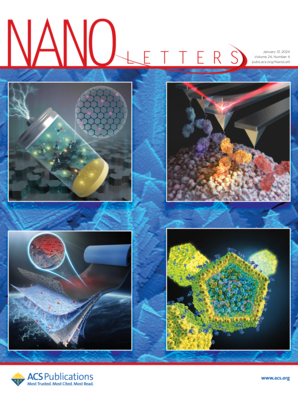Coassembly of Ultrathin Lithium with Dual Lithium-Free Electrodes for Long-Lasting Sulfurized Polyacrylonitrile Batteries
IF 9.6
1区 材料科学
Q1 CHEMISTRY, MULTIDISCIPLINARY
引用次数: 0
Abstract
With the rising demand for long-term grid energy storage, there is an increasing need for sustainable alternatives to conventional lithium-ion batteries. Electrode materials composed of earth-abundant elements are appealing, yet their lithiated-state stability hampers direct battery applications. In this paper, we propose for the first time a concept of coassembling ultrathin lithium with both lithium-free cathodes and lithium-free anodes to build high-energy, long-lasting, safe, and low-cost batteries tailored for long-duration energy storage. As a proof-of-concept, we selected sulfurized polyacrylonitrile (SPAN) as the lithium-free cathode and graphite/silicon–carbon (Gra/SiC) as the lithium-free anode, both of which are earth abundant. This newly conceptualized configuration not only successfully prevents overprelithiation but also exhibits superior energy density (293 Wh kg–1 and 363 Wh kg–1, respectively), excellent cycle stability (1,800 cycles), and benefit of low cost and environmental sustainability. This approach fosters new opportunities for the development of lithium-free, earth-abundant electrode batteries, spurring the development of sustainable and recyclable grid energy storage systems.

求助全文
约1分钟内获得全文
求助全文
来源期刊

Nano Letters
工程技术-材料科学:综合
CiteScore
16.80
自引率
2.80%
发文量
1182
审稿时长
1.4 months
期刊介绍:
Nano Letters serves as a dynamic platform for promptly disseminating original results in fundamental, applied, and emerging research across all facets of nanoscience and nanotechnology. A pivotal criterion for inclusion within Nano Letters is the convergence of at least two different areas or disciplines, ensuring a rich interdisciplinary scope. The journal is dedicated to fostering exploration in diverse areas, including:
- Experimental and theoretical findings on physical, chemical, and biological phenomena at the nanoscale
- Synthesis, characterization, and processing of organic, inorganic, polymer, and hybrid nanomaterials through physical, chemical, and biological methodologies
- Modeling and simulation of synthetic, assembly, and interaction processes
- Realization of integrated nanostructures and nano-engineered devices exhibiting advanced performance
- Applications of nanoscale materials in living and environmental systems
Nano Letters is committed to advancing and showcasing groundbreaking research that intersects various domains, fostering innovation and collaboration in the ever-evolving field of nanoscience and nanotechnology.
 求助内容:
求助内容: 应助结果提醒方式:
应助结果提醒方式:


